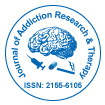Unsere Gruppe organisiert über 3000 globale Konferenzreihen Jährliche Veranstaltungen in den USA, Europa und anderen Ländern. Asien mit Unterstützung von 1000 weiteren wissenschaftlichen Gesellschaften und veröffentlicht über 700 Open Access Zeitschriften, die über 50.000 bedeutende Persönlichkeiten und renommierte Wissenschaftler als Redaktionsmitglieder enthalten.
Open-Access-Zeitschriften gewinnen mehr Leser und Zitierungen
700 Zeitschriften und 15.000.000 Leser Jede Zeitschrift erhält mehr als 25.000 Leser
Indiziert in
- CAS-Quellenindex (CASSI)
- Index Copernicus
- Google Scholar
- Sherpa Romeo
- Öffnen Sie das J-Tor
- Genamics JournalSeek
- Akademische Schlüssel
- JournalTOCs
- SafetyLit
- Nationale Wissensinfrastruktur Chinas (CNKI)
- Elektronische Zeitschriftenbibliothek
- RefSeek
- Hamdard-Universität
- EBSCO AZ
- OCLC – WorldCat
- SWB Online-Katalog
- Virtuelle Bibliothek für Biologie (vifabio)
- Publons
- Genfer Stiftung für medizinische Ausbildung und Forschung
- Euro-Pub
- ICMJE
Nützliche Links
Open-Access-Zeitschriften
Teile diese Seite
Abstrakt
Inventory for Social Network Addiction
Md Suhail Jogi, Shazia Gurgani and Yuman Kawoos
This study aims to identify the prevalence and factors associated with usage and dependence of social network among adolescents and to develop and validate an inventory to measure social network usage and addiction. Social networking sites offer users near complete control over self-presentations, making these sites a useful venue for the deployment of strategic interpersonal behavior that the users use to construct and maintain carefully considered selfimage.
Methodology: Quantitative descriptive design was used to identify the usage and dependence of social network among adolescents, to identify the Narcissism among adolescents using social network, to determine the association of usage of social network among the adolescents with their selected demographic variables (Gender, Socio-Economic Status and Residence) and to assess the relationship between social network usage and Narcissism among the adolescents, since the quantitative descriptive design aided in attaining first-hand information and enhanced obtaining accurate and meaningful information data. Simple random sampling technique was used to collect data from adolescents who fulfilled the inclusion criteria. Data was collected using self-structured inventory for social network usage and narcissistic personality inventory. The tool was validated by 9 experts. Reliability of the tool was established by using karlpearson’s correlation coefficient (“r”=0.94). Pilot study was conducted on 12 adolescents studying in 11th and 12th standards at Caset Experimental Higher Secondary School, Srinagar, Kashmir. The main study was conducted on 120 adolescents studying in 11th and 12th standards at Caset Experimental Higher Secondary School, Srinagar and Kashmir from 17/08/2017 to 17/09/2017. Ethical clearance was obtained and study was found ethically exempted. Data was analyzed using descriptive and inferential statistics.
Results: The result of the study revealed that that maximum number of subjects 75.0% were non-dependent users, 20.8% subjects were dependent users and 4.2% subjects were non users. Also, maximum number of subjects 61.7% had medium Narcissism, 24.2% subjects had high Narcissism and 14.2% had low Narcissism.
The findings of the present study showed that there was significant correlation between usage of social network and Narcissism scores (r=0.207, P=0.023). The findings of the study concluded that there was relationship between usage of social network and Narcissism implying that social network usage increases the Narcissism.
Further, there was no significant association of usage of social network with gender and socio economic status whereas as significant association was found with residence. Also, no significant association was found between Narcissism and selected demographic variables such as gender, socio economic status and residence.
Conclusion: The findings of the study concluded that majority of the subjects were non-dependent social network users with medium Narcissism. Also, there was significant correlation between usage of social network and Narcissism scores implying that increased social network usage increases the Narcissism.
Implication: Identifying the relationship between social network usage and Narcissism will help to enhance knowledge among adolescents regarding ill effects from excessive use of social networking.
Zeitschriften nach Themen
- Allgemeine Wissenschaft
- Biochemie
- Chemie
- Genetik und Molekularbiologie
- Geologie und Geowissenschaften
- Immunologie und Mikrobiologie
- Klinische Wissenschaften
- Krankenpflege und Gesundheitsfürsorge
- Landwirtschaft und Aquakultur
- Lebensmittel & Ernährung
- Maschinenbau
- Materialwissenschaften
- Medizinische Wissenschaften
- Pharmazeutische Wissenschaften
- Physik
- Sozial- und Politikwissenschaften
- Umweltwissenschaften
- Veterinärwissenschaften
Klinische und medizinische Fachzeitschriften
- Anästhesiologie
- Augenheilkunde
- Betrieb
- Dermatologie
- Diabetes und Endokrinologie
- Gastroenterologie
- Genetik
- Gesundheitspflege
- Immunologie
- Infektionskrankheiten
- Kardiologie
- Klinische Forschung
- Medizin
- Mikrobiologie
- Molekularbiologie
- Neurologie
- Onkologie
- Pädiatrie
- Pathologie
- Pflege
- Toxikologie
- Zahnheilkunde

 English
English  Spanish
Spanish  Chinese
Chinese  Russian
Russian  French
French  Japanese
Japanese  Portuguese
Portuguese  Hindi
Hindi